Things to come: just how far can microelectronics take us?
 First published in Design magazine, July 1979
First published in Design magazine, July 1979This article, published 40 years ago, has a certain relevance to the March 2018 outcry over Cambridge Analytica’s use of IT in the UK referendum and the US presidential election of 2016.
The article upholds the potential and pervasiveness of IT, exploring some of the aesthetic dilemmas it poses for product designers, and attacks relativism in matters of taste. But it also outlines the implications of mixing IT into a dumbed-down, marketing-led, escapist atmosphere of Me-me-me. In a youthful outburst, the piece condemns ‘the combination of mass, chip-based entertainment and 20th century solipsism’ as ‘a rather pernicious form of culture’.
Well: from the late 1990s, boosters of IT upheld the Internet as democratising, Silicon Valley workplace beanbags, table footie and Post-it notes as the epitome of innovation, and social media as the fount of the Arab Spring. Ignoring Barack Obama’s ideas, boosters instead rhapsodised about his use of IT to get elected. The Valley’s reliance on advertising revenues, its bank-like love of cash, its origins in and complete subordination to capitalism? These occasioned none of the usual liberal apoplexy, and passed almost without comment.
In the Spring of 2018, however, what in 1979 I termed ‘the mass entertainment industries’ were suddenly discovered, in the case of Cambridge Analytica and others, to have been ‘appealing to man’s baser instincts’ in political matters. Pretending that the people once ‘owned’ the Web only for it to be ‘stolen’ by Big Tech, yesterday’s starry-eyed boosters of IT have become its most alarmist critics, rushing almost overnight from ridiculous technophilia to a technophobic fear of the masses. The Valley turns out to be not so good after all, for it has duped the plebs.
Enjoy the piece.
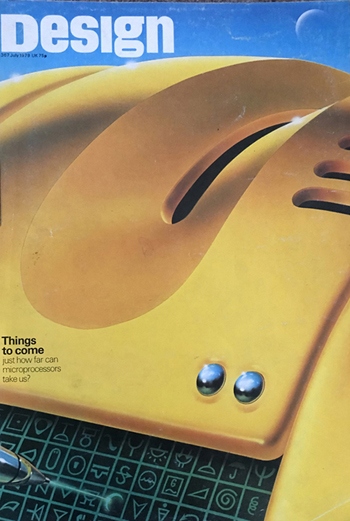 The 1979 Hanover Technology fair (CeBIT), Mecca of the world’s technologists, was rich in chip-based information products. But it was also rich in hints that the microprocessor style is about to transform the face of wholly non-electric products. This article surveys the way everything from hairdryers to Hollywood is looking digital – and worries about the inevitable backlash.
The 1979 Hanover Technology fair (CeBIT), Mecca of the world’s technologists, was rich in chip-based information products. But it was also rich in hints that the microprocessor style is about to transform the face of wholly non-electric products. This article surveys the way everything from hairdryers to Hollywood is looking digital – and worries about the inevitable backlash.
The first thing you notice about the Hanover fair is its size. It isn’t just big: it’s enormous. The 20 exhibition halls and open-air displays cover an area the size of a small town. The pavilion devoted to lighting is nine storeys high, and it takes 20 minutes to walk across Hall 1 – the office equipment hall.
For industrial designers, the most important halls to visit are those given over to R&D, to the prizewinning products in the fair’s design competition (Die Gute Industrieform) and to office equipment. Of lighting, more later. The electronic consumer products hall is disappointing: audio and domestic appliances are absent. Here the more interesting products seem to be linked to the automotive sector – citizens’ band radios and microprocessor-based breathalysers.
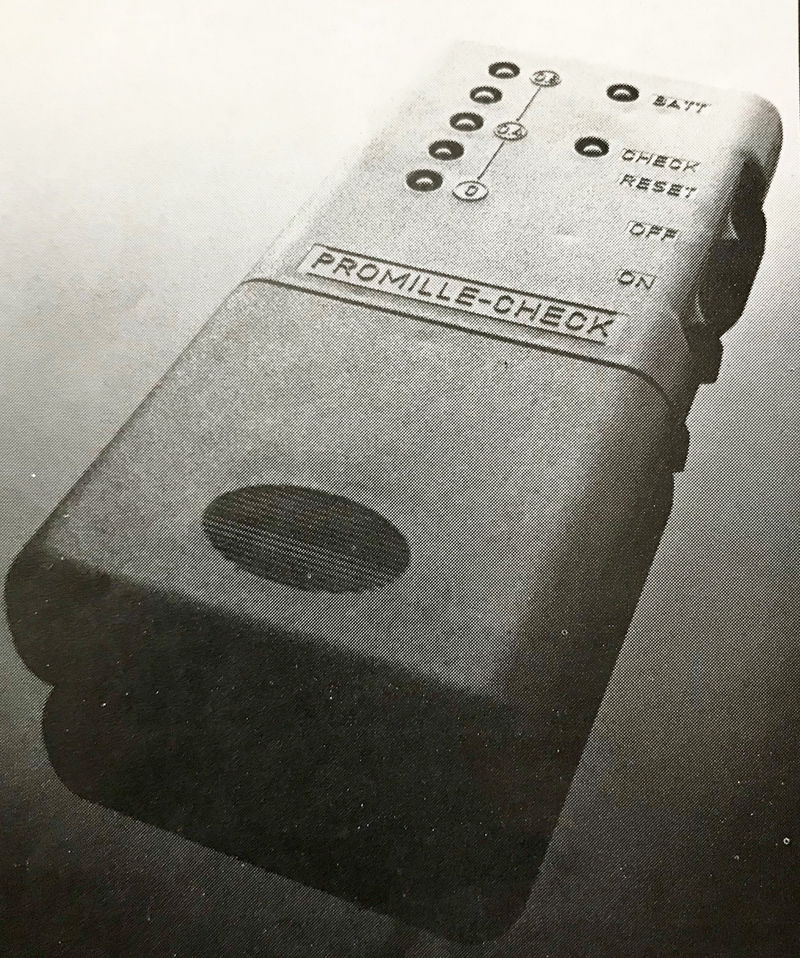
Stolle’s chip-based breathalyser, black-box successor to today’s crystals-and-bag apparatus
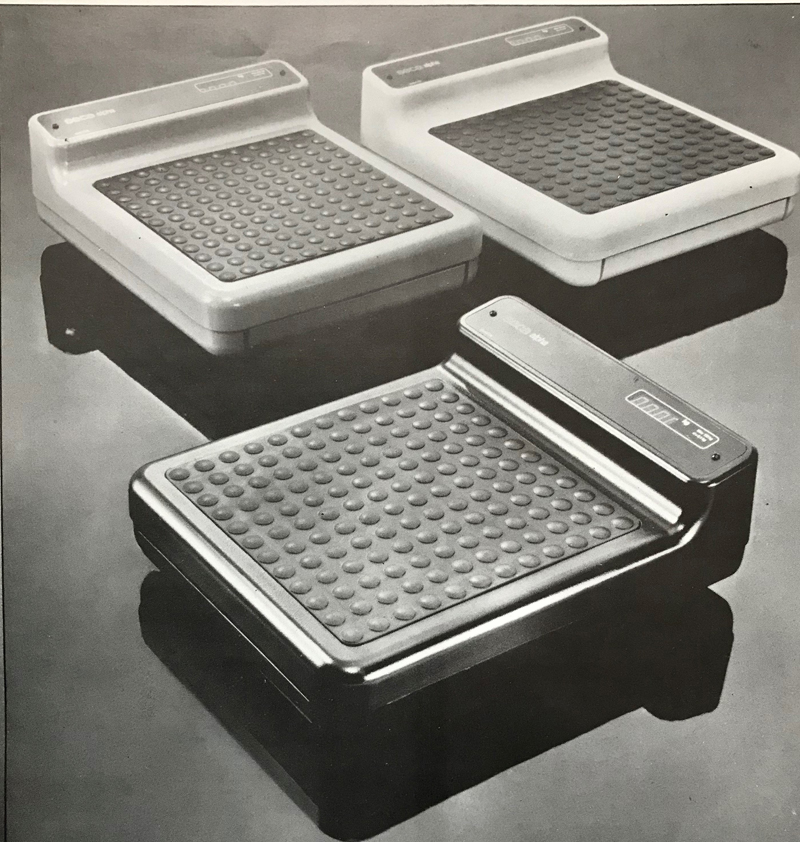
Light, battery-powered and accurate to 100grams, digital display scales show how microprocessors will force their way into the home – right into an areas personal as the bathroom
The R&D hall contains an intriguing mixture of innovation houses, information specialists in technology transfer, decidedly unacademic university research departments, and some of Germany’s best design consultancies (professional jokers Rido Busse, modest heavyweights Gruppe Interform and rising stars Lotsch & Partner). By contrast, I found the Gute Form room a real letdown: despite a considerable reputation, it was largely filled with dross this year.
One way or the other you wind up in Hall 1, office products, again. The design trends are striking.
Everybody is into multi-person workstations; tracked, hinged or otherwise ergonomically adjustable computer monitors, and keyboards which have special ramps on which operators can rest their hands (the German trade unions have demanded these, again on ergonomic grounds). The colour schemes are that all-too-familiar 1970s ice-lolly orange and freezing light blue. The exceptions are the East Europeans, who go for a garish yellow, and those more progressive Western companies who have followed ITT’s lead and opted for an off-white and milk chocolate brown combination – quiet, unpretentious, and successful whatever the size of the gadget. Also, desktops are going green, to give an ergonomic match to the letters on screens. ITT’s Data Terminal 3235, the fruit of a lengthy study by ergonomists at Berlin University, started the trend here. It has a work surface which is matt, to cut down reflected light, and of spongy texture, to prevent operators losing body heat by conduction through their wrists.
Mechanical product, electronic identity
What are the lessons of the Hanover fair designers? Confronted with an endless array of products, it’s only too easy to come away with a collection of chance observations and random insights. But in fact the single most vital lesson of the fair is so simple, you can pass over it by mistake. It stares you in the face: the largest, most extravagant, most pored-over mass of artefacts is concentrated in the office equipment sector – a sector now dominated by microprocessors.
In 1976, Design said that chips would find applications in information-shuffling products sooner than they did in consumer goods. We were right, because electronics-based enterprises have the skills to put chips into things much faster than mechanical engineering firms do (compare word-processors to cars, Prestel to washing machines). We said that, apart from generating cheap new products (digital watches, multi-feature calculators, children’s toys), chips would have the potential to change existing ones enormously: they wouldn’t just replace old components, but would transform the mechanical parts connected to them and the technologies upon which these depend too.
We also gave two warnings. First, that because chips are the classic ‘solution looking for a problem’, they would be put to work in products with an awful lot of functions – something that could result in fascias and control panels of outlandish complexity (leave aside the way in which chips can take product miniaturisation too far). Second, that as chips strip mechanical components out of products, so products quite different in function would tend to look more similar. This problem we dubbed ‘the black box dilemma’.
Hanover revealed something new: that not only will chips go into ‘information products’ first, but, because information products will form the major outlet for investment in the ‘eighties, the design of all other products will be influenced by them – even when these other products are not chip-based. Indeed culture itself will have the chip look about it.
At first sight these propositions about products and culture may not appear novel. All the pundits write about the trend towards an information society, a computer in every home But this is to treat only the most direct and obvious effects of chips. Of course automatic offices, data networks, telecommunications link-ups and electronic entertainment/media technology will have an immense quantitative significance – they will absorb a greater fraction of our lives and of the economy. Yet their qualitative impact on things non electronic may be more significant still. A glance at three previous technological revolutions shows why.
The point about the Age of Steam was not simply that this form of power was applied in every factory. Competition from steamboats accelerated the pace of innovation in sailing technology (see Nathan Rosenberg, Perspectives on technology, 1976). Steam brought pollution, the Factory Acts and Charles Kingsley’s chimney-sweeping Water Babies, developments only indirectly related to pumps, pistons and cylinders. In design terms, the aeroplane brought not just faster transport, but streamlined toasters, fridges, trains and cars (Donald J Bush, The Streamlined Decade, 1975) – products without an aerofoil or propeller on them. And the car brought chrome-plating to products wholly unrelated to the automotive field.
Now back to the fair. Take lighting: again, matt, crackle-finished ebony units dominated room after room. This is the black box dilemma again – now embracing products whose only link with chips is a glowing filament wire. The most disorientating example of this is the QRN 114 halogen lamp, by Philips. Though it has received a number of accolades for good design, it looks more like a Philips pocket dictating machine than a lamp. Same square trim, same matt black and silver finish; only the fact that it’s mounted on a wall, rather than lying on a desk, would prevent people from talking into it.
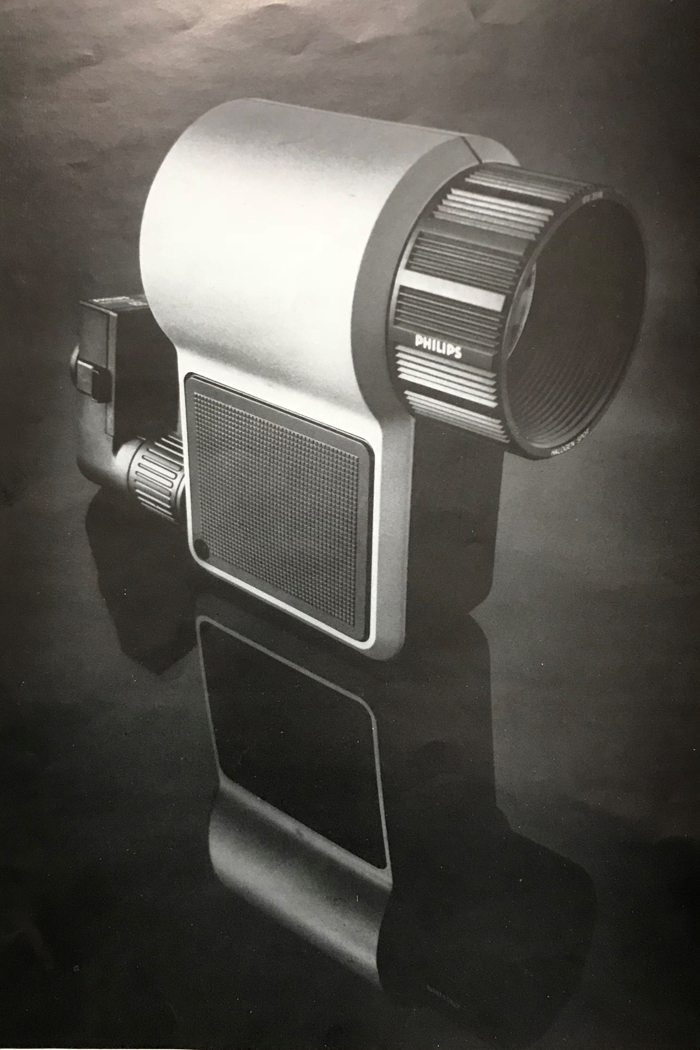
Chic spotlight – or executive tape recorder?
Gruppe Interform’s beautiful hand-held/wall-mounted hairdryer, designed for Rotel, comes in orange and black. Without its flex you could easily mistake it for a rather bulky floppy disk drive: jam it in the right interface and out could pop a hundred programs. Does it have a chip in it? No. Even the most fashionable hairdryer doesn’t require that – yet.
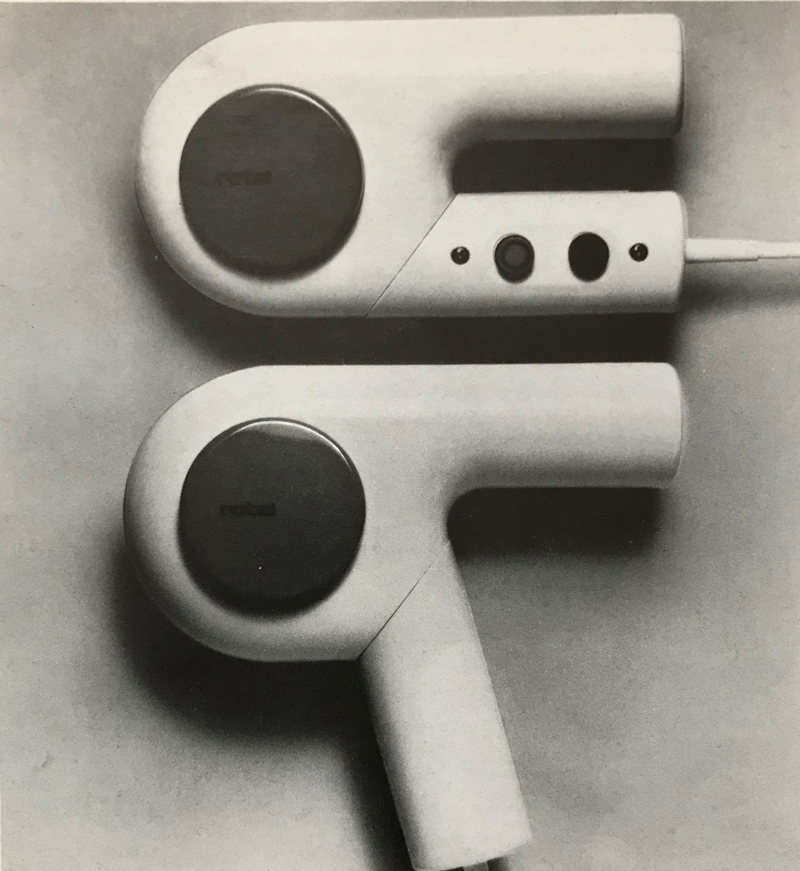
Twist-grip hairdryer – or plug-in computer accessory?
Busse Design’s radiator was selected for the Gute Form exhibition. Intended for domestic use, it is in that silver and black office gear style yet again: and it looks like the in tray of a flash photocopier. No chips, no electronics, just the functionalism of a high-powered typing pool.
Or take Frank’s mobile water sprayer. Silver and black again, it more resembles a photocopier on wheels than a piece of hydraulics intended for street use. Nor is it exceptional: a lot of the forklift trucks at the fair would not seem out of place in an office – after all, they’re painted in the standard orange and blue of minicomputers. Yet there are no chips in any of these.
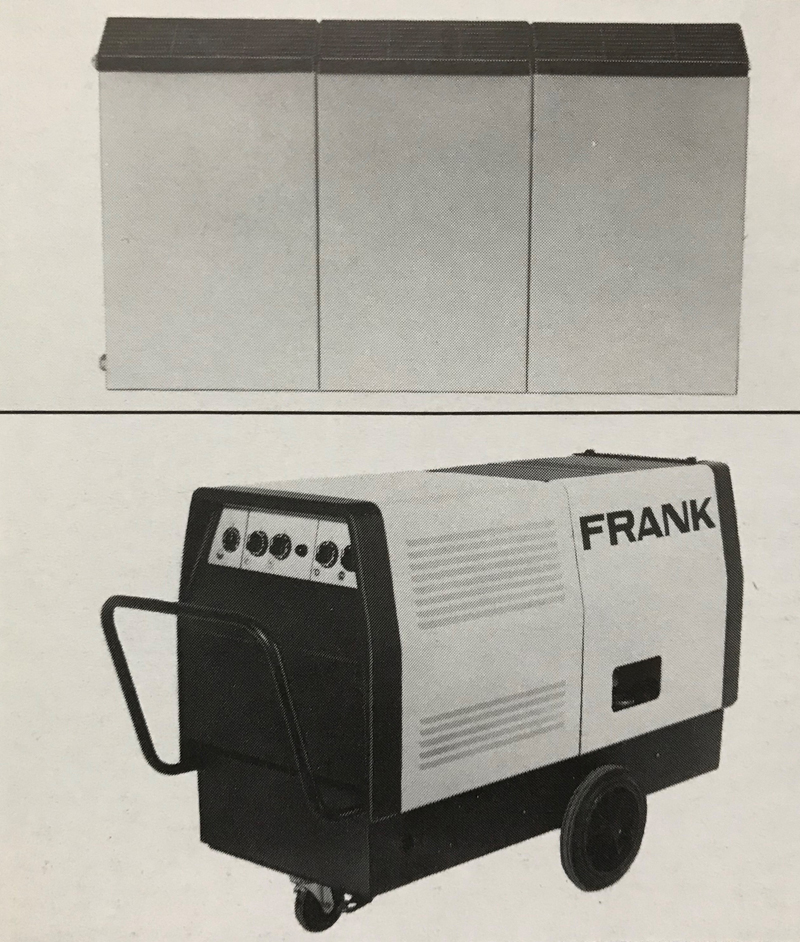
Office equipment? Top, living room radiator; above, roadside water sprayer
Computer technology means dull design
The information products that so influence industrial design come from the multinational corporations. And the main multinationals come from the countries most in evidence at Hanover – the US, Japan and West Germany, Well: as far as design goes, the distinguishing characteristic of these nations is that they appear to lack any distinguishing characteristics.
To take each in turn: apart from a few exceptions – IBM’s Elliot Noyes being the best known – the US seems to possess no equivalent to those historic British design values which native cognoscenti condemn as outdated but which foreigners applaud so much. Indeed it may be that America’s whole history (‘from barbarism to decadence without an intervening period of culture’ as her meanest critics put it), coupled with the diversity of her internal markets, will tell against the development of a distinct design philosophy for many years to come.
On the other hand, Japan and West Germany today lack a recognisably national product aesthetic because their established traditions were smashed by fascism and war.
Unlike Italy, where mass support for the Resistance enabled a new generation of left-wing, humanist architect-designers (Sottsass, Bellini) to flourish after 1945, the vestiges of feudal and 19th century design sensitivity that survived in Imperial Japan were largely destroyed by 1945, only to be replaced by the more vulgar habits of San Francisco and Los Angeles. Similarly, the social-democratic ideology of the Bauhaus was extirpated by the Nazis, to be succeeded by idioms from Detroit and New York.
Again there are exceptions. The Germans mentioned earlier have done some good work. But on the whole, the conclusion is that the bland, faceless chip-based styling led by the US and transmitted by companies like Rank-Xerox, Siemens and Toshiba will have a pervasive influence on the products of the 1980s, chip or non-chip, and on entertainment.
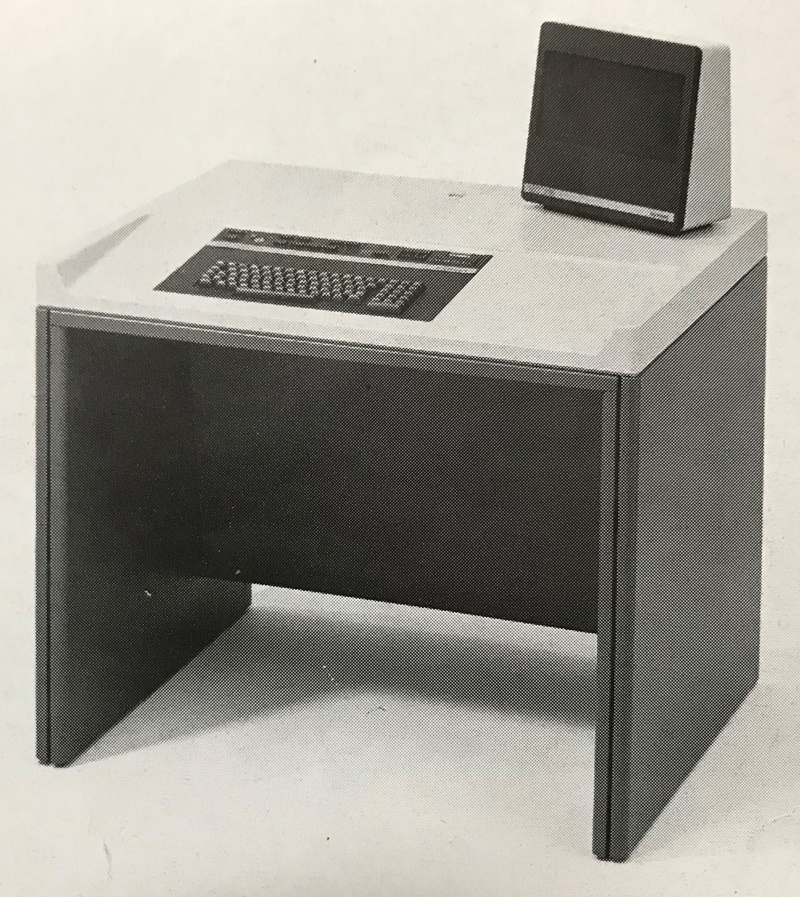
Sub-operator’s desk for a new data processing system by Siemens
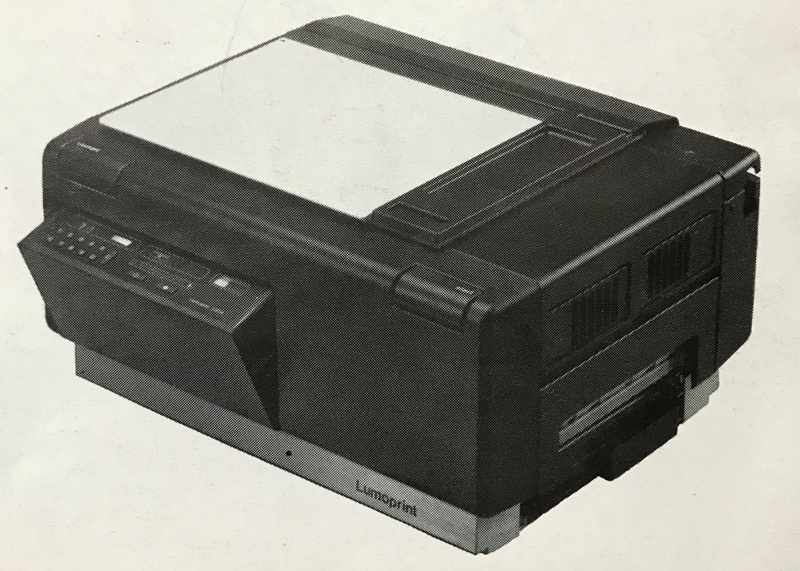
Ebony inscrutability: Busse Design’s microprocessor-controlled photocopier. Matt black and compact, it is operated by a ‘cockpit’ which pops out of its side.
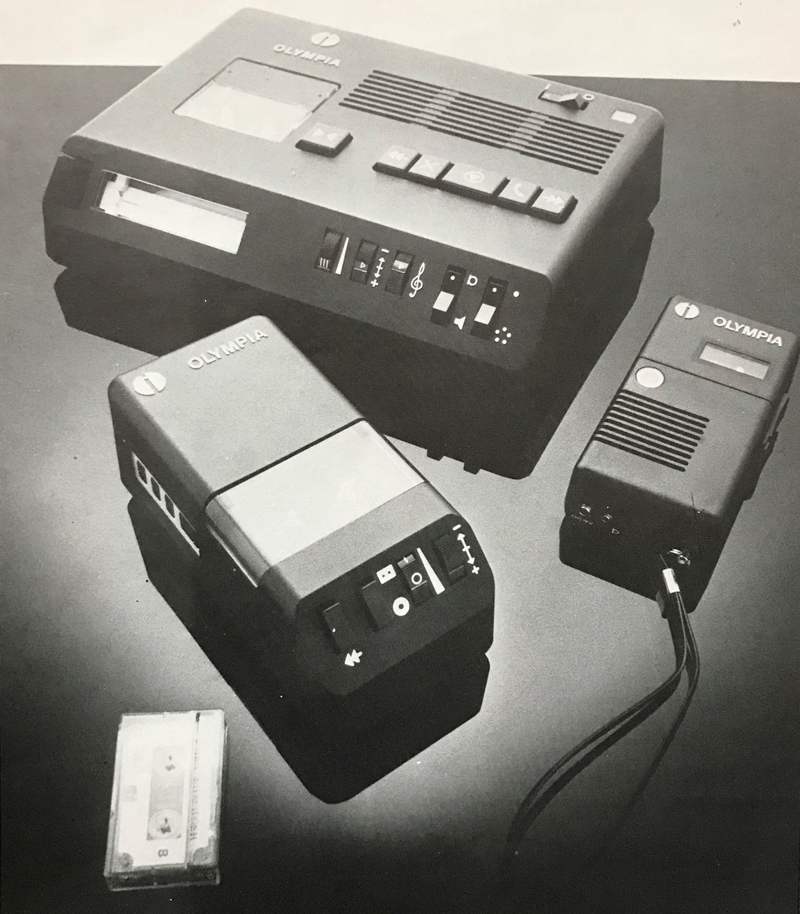
Dictation machine, handheld recorder and minicassette transcriber by Olympia. Pic: Colin Curwood.
Dining’s digital, dancing’s digital – and films are too
The most noticeable change in High Street catering over the past few years has been the invasion of American eatery chains into Europe. But what’s less noticed is the way in which the most successful concern – McDonald’s – has come to rely on microprocessors to maintain its market position. It takes the concept of fast food seriously, claiming to fill everyone of its 7m orders a day within a minute. That means its cooking has to be spot-on. Meat is weighed on digital scales. Potatoes are fried with the aid of microprocessor-based kitchen computers (chips help cook chips). And customer bills are added up on special McDonald’s touch-control tills.
Chips therefore allow McDonald’s to keep its wage bills down, queues short and turnover high. That enables it to charge lower prices, which, especially in these inflationary times, makes a out-of-home hamburgers a more sensible alternative to preparing one’s own meals. As the recession deepens, people are working harder and longer to get by, all of which ensures that a ‘quick bite’ is more common than a time-consuming blow-out. General result: digital technology gives mass popularity to … digital food. Particularly, as it happens, in McDonald’s biggest growth areas outside North America – West Germany and Japan.
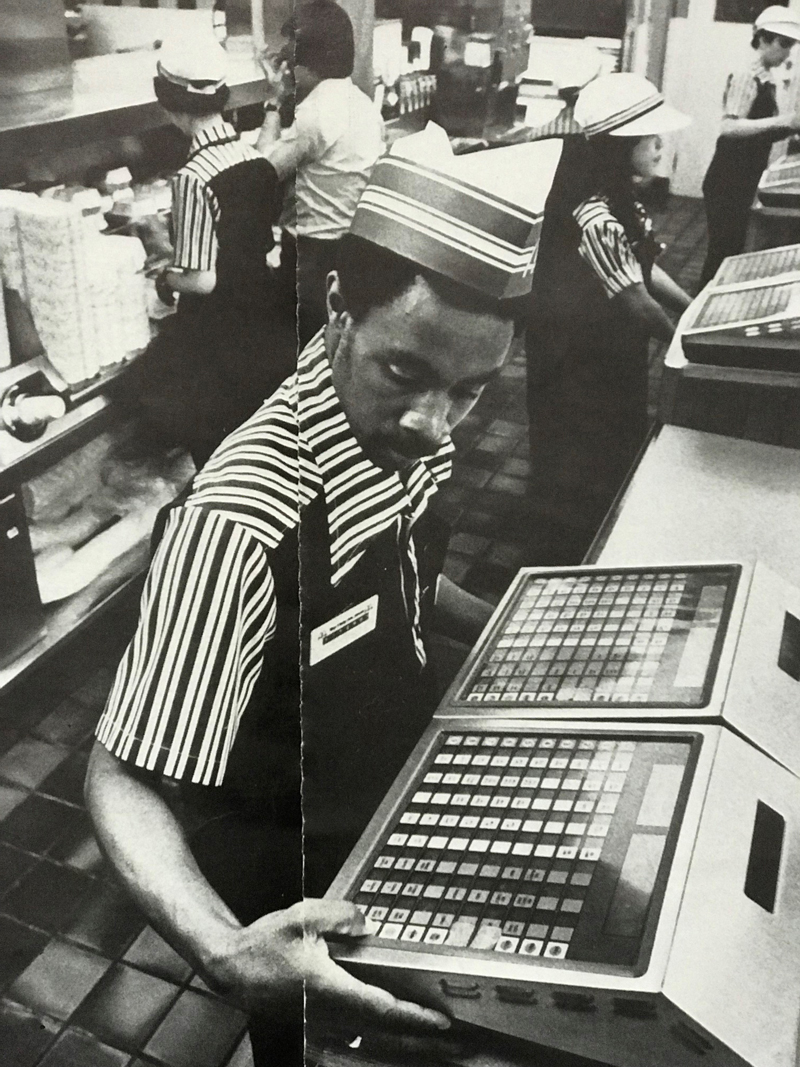
Clocking up another burger: chips help shift the meat at McDonald’s
Now turn from burgers to disco music. Since 1975, and particularly in the past 18 months, rock and roll the world over has been transformed by the astonishing rise of US disco. Last year 36m Americans in 20,000 clubs answered disco’s clarion call to dance, thrilling to the thud of drums, bass and just a hint of melody and lyrics – all recorded at a standard 125 beats per minute.
Again microprocessor technology is what makes the whole movement possible. Chips can give the all-powerful record producer the 48-track precision he needs for his mix. They deck out the £350,000 Munich recording studio in which disco sex queen Donna Summer makes an endless succession of million-selling albums. They fill its automatic ‘rhythm machines’ and its Moog synthesisers, giving them a repertoire as varied as a 100 different waveforms. They are the power behind Kraftwerk, practitioners of explicitly high tech/space disco, whose £125,000 Dusseldorf studio boasts technicians in white coats; they cost Warner much of its £3m investment in the medium. General result: digital technology gives mass popularity to… digital music.

Get away from it all with Donna
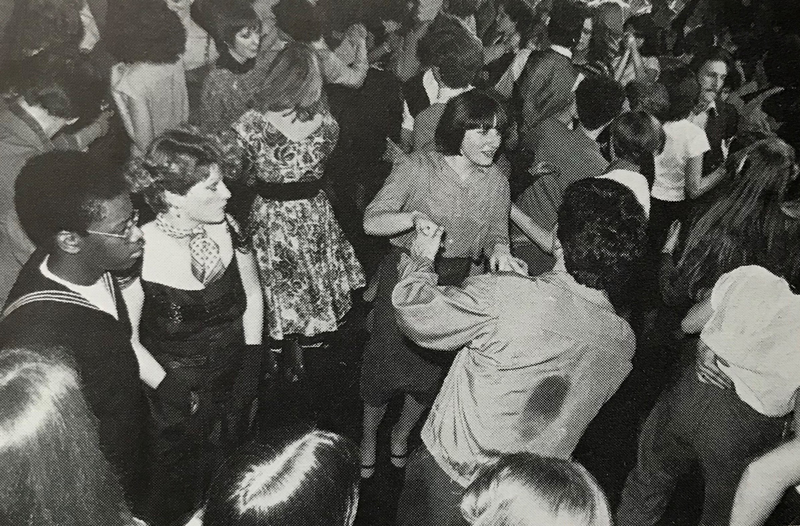
Out on the floor, regimented escapism
Finally, take films. America leads the world revival in film-going, with an annual box office take of a billion tickets and $3bn. Again, foreign investment is vital: few other US industries raise half their revenue abroad. Once more, the main sources of income outside North America are Japan and West Germany, which account for $100m of rentals overseas.
Chips are behind the major financial successes of the film business. They put the computerised conflicts into Star Wars and helped it gross more than $40m – the highest figure in Hollywood’s history. They put the synchronised saucers into Close Encounters of the Third Kind and made it almost as big a money-spinner. And chips don’t just win audiences by special effects. They will bring films into the home. Films will be the major software for video tape recorders (numbers sold this year: 400,000 in the US, 200,000 in Europe and 600,000 in Japan). General result: digital technology gives mass popularity to… digital films and digital home cinemas.
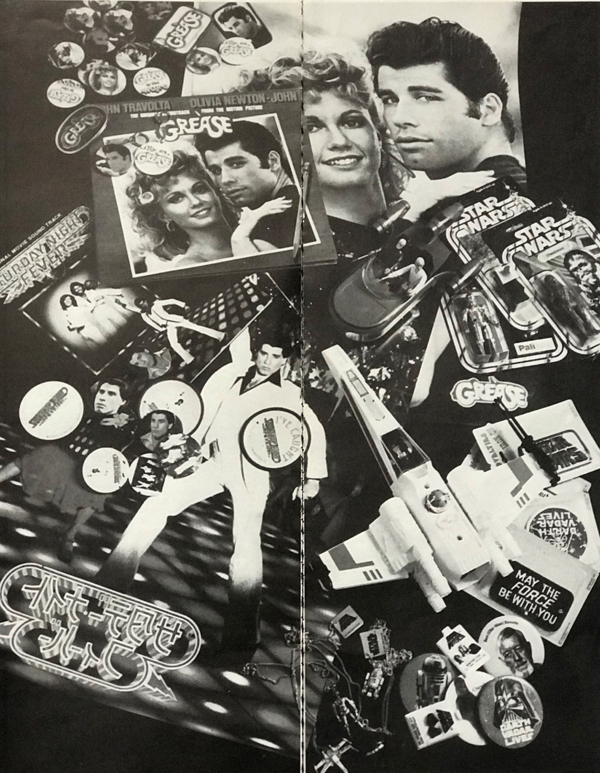
Selling Gone with the wind was a small-time operation
To complete this brief roundup of microprocessor-based munching, music and movies, I’ll mention two further tendencies – one obvious, one more subtle.
First, there’s a tendency for the three activities to be organised as a unified marketing operation, and to link them to hard-edged products. British cinemas now heave hamburgers over their counters; the double album soundtrack of Saturday Night Fever sold a million copies a week in the US during Christmas 1977; disco has generated special jeans, dresses and handbags; and electronic toy specialists Palitoy made a killing by buying up the sole rights on Star Wars robots and rockets.
Second, there’s a paradoxical tendency for the heavily socialised entertainment enterprises to continually reinforce individualism. I think this has vital consequences for designers; consequences which must be resisted.
Against the stream
The message of Close Encounters is: find yourself in the Alien Other. (Whether McDonald’s has a message I’ll leave open to debate.) Both put you, the individual, at the centre of the action. In disco it’s your body, not your head, that matters. Your partner, other dancers and the musicians count for little. You’re the star. In Close Encounters you, in the shape of plain-man Roy Neary (Richard Dreyfuss), rise above mass hysteria, government population round-ups and a maze of flashing lights to gain your very own spiritual communion with Higher Beings. Indeed, even in the slighter Star Wars, the counterpoint between the human protagonist and impersonal technology is established through the quasi-religious slogan ‘May the Force be with you’.
I don’t wish to portray these characteristically American paeans to individualism as conscious ones: I’m not offering conspiracy theory. Still, I do find the combination of mass, chip-based entertainment and 20th century solipsism a rather pernicious form of culture. Pernicious, because for all the glorification of the individual, its fundamental thrust is: submit. Submit to ecstasy physical (disco) or metaphysical (UFOs, the Force), of course, but submit all the same.
Me, I don’t want to submit to such irrational urges. I hope others won’t want to either. I hope designers will refuse to insult people’s intelligence by ‘giving them what they like’.
Now, in his article in the May 1979 issue of Design, editor-in-chief John Blake tells designers ‘Don’t forget that bad taste is popular’. Pointing both to the limitations of the Modern Movement and to its elitist excesses, he argues that designers cannot act as the arbiters of popular taste; that nobody could say his own taste for Golden Delicious apples over Cox’s was ‘wrong’. But it seems to me that taste is not a physiological matter as John Blake’s gustatory analogy suggests. Taste, I would contend, is created socially. To the very limited degree that they can influence popular taste, designers – even educators, at a pinch – have a responsibility to improve it.
This is where the Hanover fair is significant. On show was a lot of super-functional, sub-Bauhaus office machinery from the US, West Germany and Japan – the kind of machinery that more and more people will have to work with. Also on show was the aesthetic of chip technology as applied to non-chip products. Now, in general, that aesthetic isn’t going to make people jump around in excitement. In an increasingly digital world, more and more people will want something personal to lighten their lives a little bit. The much famed microprocessor revolution may, indeed, herald a triumph of reaction in design, as the pressure builds up on designers to abandon all thought of setting standards for popular taste and relate simply to the emotional needs of the individual instead. This, after all, was what was hinted at in this magazine’s recent article on ‘psychographics’.
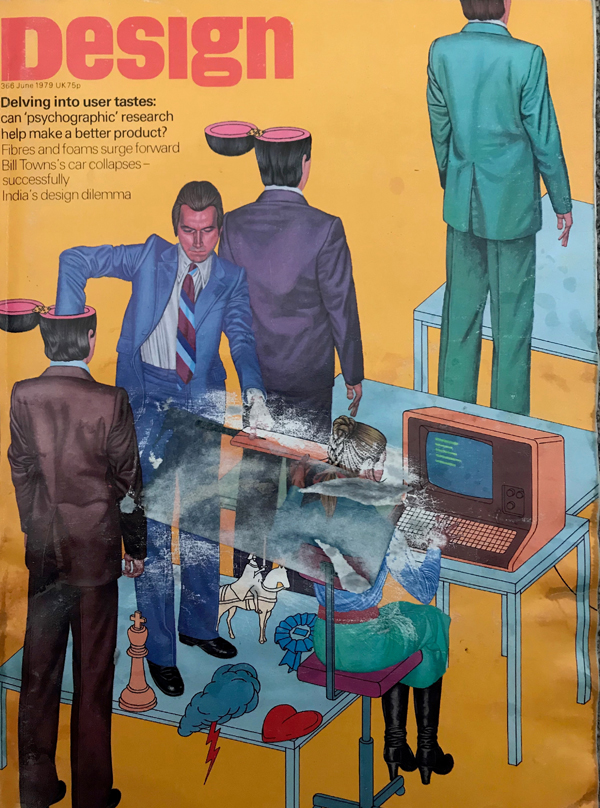
Design magazine, June 1979
I don’t want to decry any individual’s emotional needs. But, as the examples of disco and Close Encounters show, the mass entertainment industries can turn the catchphrase to their own ends by appealing to our baser instincts in the realm of culture. In the realm of design, I fear that manufacturing industry will use it to reinforce all that is bad in ‘bad taste’. And populist philosophy will not convince me that bad design is good.
That leaves designers with a dilemma. They can carry on boring people with the ideas they are trying out on the basis of chip technology. Or they can resort to kitsch. Actually I think they will be forced to develop a wholly new aesthetic to survive. Just what that aesthetic will be, I will leave my friend and ex-boss, Mark Brutton, to deal with in our next issue.
Fmr President of Kenya on Trump cutting off foreign aid:
“Why are you crying? It’s not your government, he has no reason to give you anything. This is a wakeup call to say what are we going to do to help ourselves?”
America first is good for the world.
Our entire Green Socialist establishment should be banged up under the ‘Online Safety’ laws, for spreading demonstrable lies (the ‘climate crisis’), causing non-trivial harm to the industrial working class, ordinary drivers, farmers, taxpayers etc, etc.
#Chagos? #Mauritius PM Navin Ramgoolam "is reported to want Starmer to pay £800m a year, plus ‘billions of pounds in #reparations’." (14 January) https://www.spiked-online.com/2025/01/14/the-chagos-islands-deal-is-an-embarrassment/
Now the Torygraph wakes up https://telegraph.co.uk/gift/1ff8abbb462cd609
Read @spikedonline - first with the news!
Articles grouped by Tag
Bookmarks
Innovators I like

Robert Furchgott – discovered that nitric oxide transmits signals within the human body

Barry Marshall – showed that the bacterium Helicobacter pylori is the cause of most peptic ulcers, reversing decades of medical doctrine holding that ulcers were caused by stress, spicy foods, and too much acid

N Joseph Woodland – co-inventor of the barcode

Jocelyn Bell Burnell – she discovered the first radio pulsars

John Tyndall – the man who worked out why the sky was blue

Rosalind Franklin co-discovered the structure of DNA, with Crick and Watson

Rosalyn Sussman Yallow – development of radioimmunoassay (RIA), a method of quantifying minute amounts of biological substances in the body

Jonas Salk – discovery and development of the first successful polio vaccine

John Waterlow – discovered that lack of body potassium causes altitude sickness. First experiment: on himself

Werner Forssmann – the first man to insert a catheter into a human heart: his own

Bruce Bayer – scientist with Kodak whose invention of a colour filter array enabled digital imaging sensors to capture colour

Yuri Gagarin – first man in space. My piece of fandom: http://www.spiked-online.com/newsite/article/10421

Sir Godfrey Hounsfield – inventor, with Robert Ledley, of the CAT scanner

Martin Cooper – inventor of the mobile phone

George Devol – 'father of robotics’ who helped to revolutionise carmaking

Thomas Tuohy – Windscale manager who doused the flames of the 1957 fire

Eugene Polley – TV remote controls



0 comments